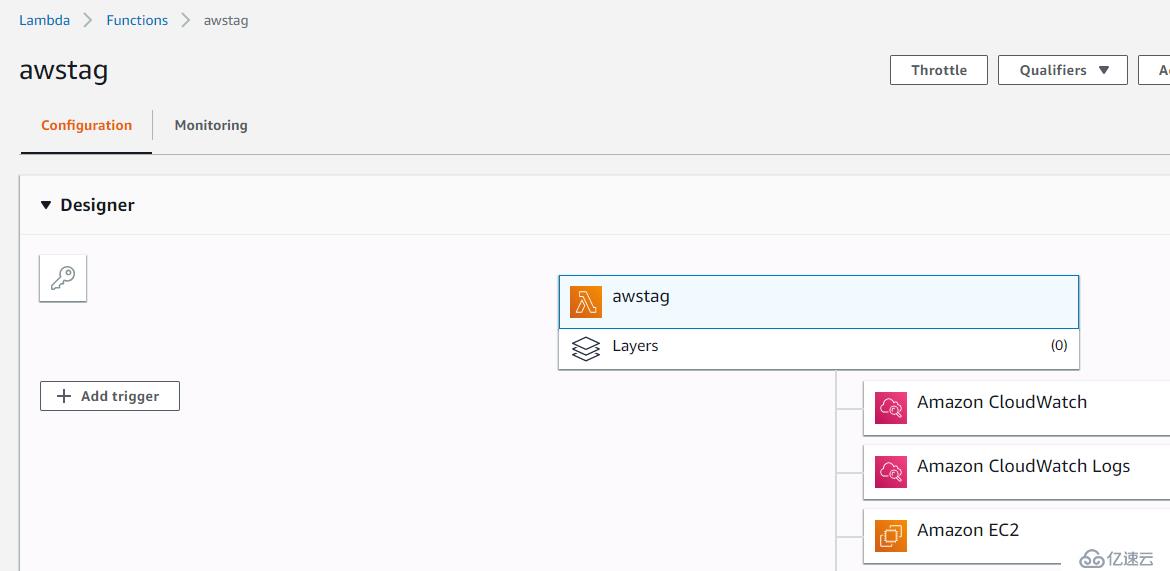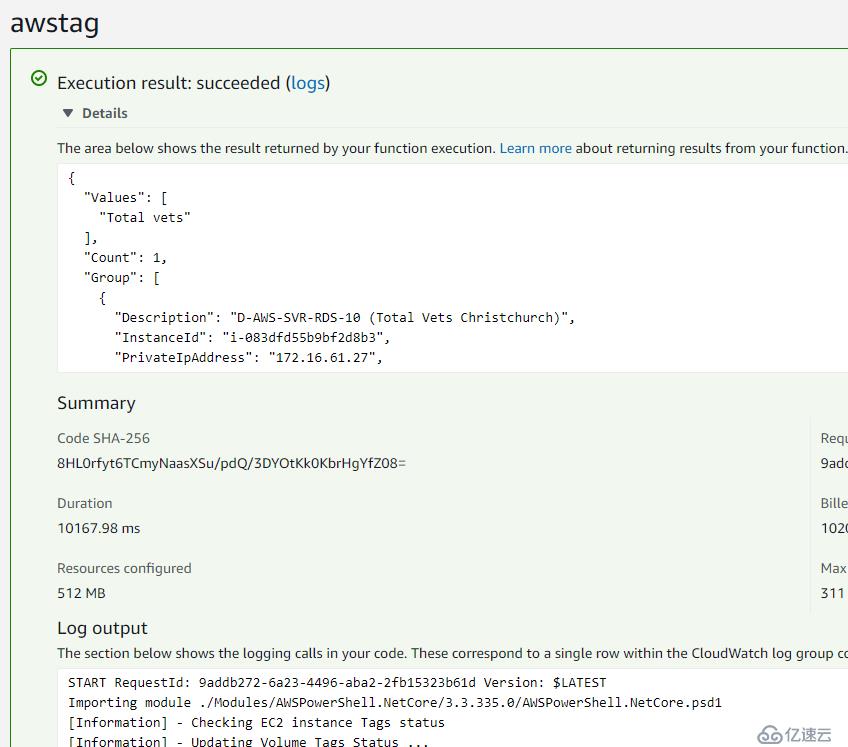这两天我都在看如何使用Lambda和Python,但是平常更习惯使用PowerShell来管理各种系统。试试看如何在Lambda里面使用PowerShell吧。
首先在本地计算机上需要安装下面三个模块。
安装PowerShell Core
https://github.com/powershell/powershell
安装 the .NET Core Software Development Kit (SDK)
https://www.microsoft.com/net/download
安装 AWSLambdaPSCore module
Install-Module AWSLambdaPSCore -Scope CurrentUser
安装好了,在Powershell6的控制台 里面执行
New-AWSPowerShellLambda -ScriptName awstag -Template basic
他会自动根据basic的模板创建一个目录,里面用一个空白的ps文件,和一个readme文件。这个空白的ps文件自动加载了powershellcore的模块,如果我们需要添加其他的模块,需要在这里修改。下面是我的一个测试脚本。这个脚本主要的功能是检查tag,确保EC2,Volume和Snapshot都有对应的tag,因为每个月我需要通过tag来显示不同诊所的账单。另外如果snapshot如果超过60天,顺便也自动给我删除了。
# PowerShell script file to be executed as a AWS Lambda function.
#
# When executing in Lambda the following variables will be predefined.
# $LambdaInput - A PSObject that contains the Lambda function input data.
# $LambdaContext - An Amazon.Lambda.Core.ILambdaContext object that contains information about the currently running Lambda environment.
#
# The last item in the PowerShell pipeline will be returned as the result of the Lambda function.
#
# To include PowerShell modules with your Lambda function, like the AWSPowerShell.NetCore module, add a "#Requires" statement
# indicating the module and version.
#Requires -Modules @{ModuleName='AWSPowerShell.NetCore';ModuleVersion='3.3.335.0'}
# Uncomment to send the input event to CloudWatch Logs
# Write-Host (ConvertTo-Json -InputObject $LambdaInput -Compress -Depth 5)
Write-Host "Checking EC2 instance Tags status" -ForegroundColor Yellow
$all=Get-EC2Instance | select -expand instances
$return=$all | Where-Object {$_.tag.key -notcontains "Clinic"}
if($return -ne $null){
$username = "test@abc.com"
$password = "Passwordtest" | ConvertTo-SecureString -asPlainText -Force
$credential = New-Object System.Management.Automation.PSCredential($username,$password)
$id=$return.InstanceId
Send-MailMessage -From test@abc.com -to test@abc.com -SmtpServer smtp.office365.com -Port 587 -UseSsl -Subject "EC2 instance Tag" -body "$id" -Credential $credential
exit
}
# confirm EC2 instances were tagged
$result=@()
foreach($item in $all){
$Name=$item.tag | Where-Object {$_.Key -eq 'Name'} | select -ExpandProperty value
$clinic=$item.tag | Where-Object {$_.Key -eq 'clinic'} | select -ExpandProperty value
$item | add-member -NotePropertyName Description -NotePropertyValue $name
$item | add-member -NotePropertyName Clinic -NotePropertyValue $clinic
$item = $item | select *
$result+=$item
}
$result | select Description, InstanceId, privateIpaddress, Clinic | Group-Object Clinic
write-host "Updating Volume Tags Status ... " -ForegroundColor Yellow
#Tag all volumes based on their attached EC2 Clinic Tag
$allvol=Get-EC2Volume | Where-Object {$_.tag.key -notcontains "Clinic"}
foreach($item in $result){
foreach($item2 in $allvol){
if ($item2.attachments.instanceid -eq $item.InstanceId){
$value=$item.Clinic
New-EC2Tag -Resource $item2.VolumeId -Tag @{Key="Clinic";value=$value}
}
}
}
Write-Host "Updating Snapshot Tags Status..." -ForegroundColor Yellow
#Tag all snapshots based on the volume Tag
$allvol=Get-EC2Volume
$filter= New-Object Amazon.EC2.Model.Filter -Property @{Name = "owner-id"; Values ='386115804199' }
$snapshots=Get-EC2Snapshot -Filter $filter
$snapshots1= $snapshots | ? {$_.Tag.key -notcontains "Clinic"}
foreach($i in $snapshots1){
$volid=$i.VolumeId
foreach($j in $allvol){
if($volid -eq $j.Volumeid){
$value=$j.tag | Where-Object {$_.key -eq 'Clinic'} | select -ExpandProperty value
$name=$j.Tag | Where-Object {$_.key -eq "Name"} | select -ExpandProperty value
$snapid=$i.snapshotid
write-host "--$snapid--"
New-EC2Tag -Resource $snapid -Tag @{Key="Clinic";value=$value}
New-EC2Tag -Resource $snapid -Tag @{Key="Name";value=$name}
}
}
}
write-host "Deleting Snapshots older than over 60 days !" -ForegroundColor Yellow
$date=(get-date).AddDays(-40)
foreach($snapshot in $snapshots){
$id=$snapshot.snapshotid
if($snapshot.starttime -lt $date){
$snapshot
Remove-EC2Snapshot -SnapshotId $id -Confirm:$false
}
}接下来在Powershell6 的控制台执行,他会自动绑定iam的role,压缩相关的模块和执行脚本,然后上传到Lambda的控制台。这里的iam role我是随便写的,允许访问ec2和 cloudwatch log。
Publish-AWSPowerShellLambda -ScriptPath .\awstag.ps1 -name awstag -iamrole 'ec2fullaccess' -Region ap-southeast-2
等个1分钟,登录aws 就可以看见上传的函数了。

代码这一块不像Python能直接看见,直接告诉你太大 没法显示 但是我可以直接调用

测试一下试试,显示成功

去对应的cloudwatch 看看

Done!
免责声明:本站发布的内容(图片、视频和文字)以原创、转载和分享为主,文章观点不代表本网站立场,如果涉及侵权请联系站长邮箱:is@yisu.com进行举报,并提供相关证据,一经查实,将立刻删除涉嫌侵权内容。